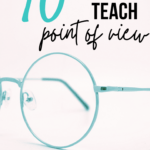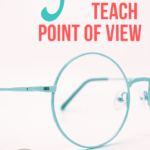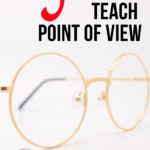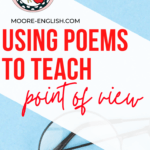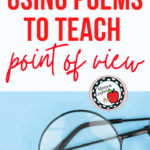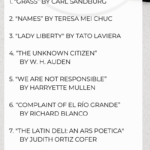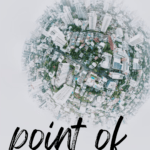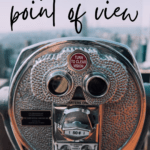My all-time-favorite professional development book is Understanding by Design by Grant Wiggins and Jay McTighe. (In fact, you’re probably sick of hearing about it.) I think about this book each week as I build my lesson plans, which include the 6 Facets for Understanding. Two of the most important facets are perspective and empathy.
I thought about these facets a lot as I was putting together this collection of poems to teach point of view. Each piece of poetry provides students with an opportunity to look at the world from another perspective. Therefore, students practice empathy and understanding. In a world that seems more exhausting each day, few things are more important than these elements!
This post this post may contain affiliate links. Please read the Terms of Use.
9-10 Poems for Teaching Point of View
In my World Literature class, we focus a lot on point of view. How do writers, speakers, and characters from cultures outside our own experience help us better understand the world? What can we learn from reading about and through other perspectives?
Of course, these questions are central to CCSS.RL.9-10.6. It specifically challenges students to “Analyze a particular point of view or cultural experience reflected in a work of literature from outside the United States, drawing on a wide reading of world literature.” Here are my favorite suggestions:
Symbols are an important part of how we make and share meaning. Therefore, considering how American symbols appear to someone who is not from the US is a great exercise in perspective. “lady liberty” by Tato Laviera provides students with just such an opportunity. This poem take a well-known symbol and interpreting from a different perspective. When I introduce this poem, I show students a series of pictures of the Statue of Liberty with different filters. Then, I ask them how each filter changes the mood of the poem. The different filters help prepare students for “filtering” the poem through a fresh perspective. Read the poem here.
Similarly, to introduce “Names” by Teresa Mei Chuc, I ask students to think of all their names: family names, nicknames, pet names, and their names from foreign language classes. For me, I have my first name, my teacher name, and the two or three horribly embarrassing nicknames my father uses for me. While this list is not the same as Teresa Mei Chuc’s speaker’s experience, it gets students ready for a poem that tackles some important issues, including code switching, white washing, and assimilation. Read the poem here.
Prior to putting together this list, Judith Ortiz Cofer was the writer whose work I knew best. In a graduate studies class, we read The Latin Deli: Telling the Lives of Barrio Women and Silent Dancing: A Partial Remembrance of a Puerto Rican Childhood, both of which I fully recommend. From the former, I chose “The Latin Deli: An Ars Poetica” because it has a clear literary perspective I thought my students would enjoy. I think you will, too!
Next, “Complaint of El Río Grande” by Richard Blanco is another poem that presents a familiar landmark from a different perspective, this time to devastating effect. This is a poem that changes and challenges readers while also providing teachers with a chance to focus on point of view, mood, and figurative language. Read it here.
Similarly, “Zapotec Crossers (or, Haiku I Write Post-PTSD Nightmares)” by Alan Pelanez is what a former teacher called a “stick-to-your-bones” poem. Once you read it, this poem is forever with you. Covering subjects similar to Blanco, Pelanez uses haiku form to help tell a story most of my students have never heard. Overall, this is a poem that teaches point of view by force, and it’s well worth the read. Check it out here.
All of these 9-10 titles are included in my 9-10 Point of View Poetry Bundle. With the bundle, you get one of the poetry resources for free! I’ve also put together this free 9-10 unit planner!
11-12 Poems for Teaching POV
At the 11-12 level, the Common Core asks students to focus on analyzing point of view as it is complicated by satire, hyperbole, understatement, irony, ambiguity, etc. So when I put together this collection of titles, I looked for places where things are not what they seem.
Firstly, with “Grass” by Carl Sandburg, students encounter a point of view complicated by historical setting and symbolism. The fact that the grass is the speaker also throws students momentarily. Of the poems on this list, this is the one that’s been in my junior rotation the longest. And it has repeatedly proven to be a great poem for the classroom. Read it here.
Similarly, “We Are Not Responsible” by Harryette Mullen has a speaker students do not anticipate. A corporate entity narrates this poem, and the entire text is reminiscent of those terms and conditions we all ignore. Furthermore, Mullen’s use of satire and irony makes this a challenging text ideal for helping students reckon with poetry and with larger issues such as privacy, responsibility, and integrity. Read it here.
Additionally, “The Unknown Citizen” by W. H. Auden is a good example of satire. Firstly, this poem has a dystopian nature that engages readers immediately. Like “Grass,” this is a poem that has appeared in my classroom frequently. Likewise, it never fails to hook students and get them talking about relevant issues. Read it here.
Of the titles on this list, “I Sit and Sew” by Alice Moore Dunbar-Nelson is the most subtle. It’s also my favorite title on this list! On one hand, the poem is in the first person, so it’s more straightforward than some other titles on the list. However, the speaker’s use of irony packs a punch! Read it here.
Finally, “I, being born a woman and distressed” by Edna St. Vincent Millay is maybe the least subtle poem on this list. But it pairs beautifully with Dunbar-Nelson’s work. Together, these poems provide a new perspective on femininity, strength, and traditional gender roles. Overall, Millay’s speaker uses irony in a way that will engage readers and lead to great classroom conversations. Read it here.
All of these 11-12 titles are included in my 11-12 Point of View Poetry Bundle along with the 11-12 unit planner. With the bundle, you get one of the poetry resources for free! Of course, if you want all 10 poems discussed here, you can pick up the 9-12 Point of View Poetry Bundle, which comes at an ever steeper discount!

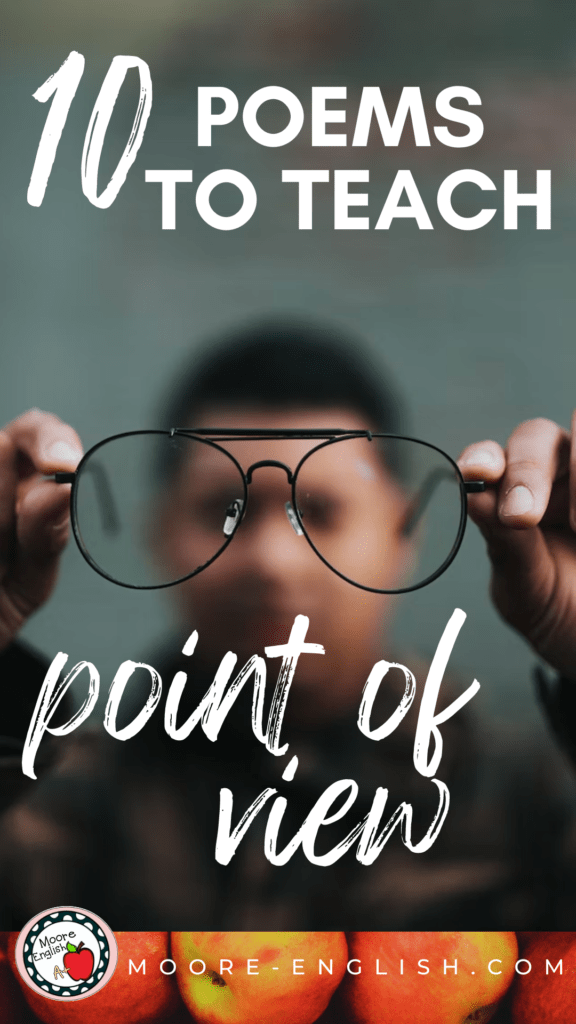
Photo by Volodymyr Hryshchenko on Unsplash








